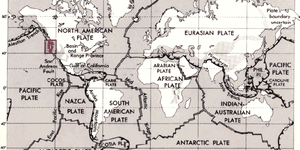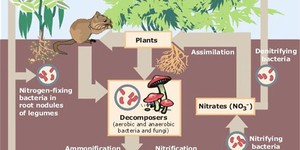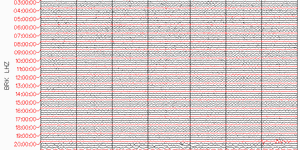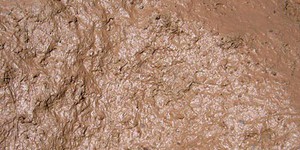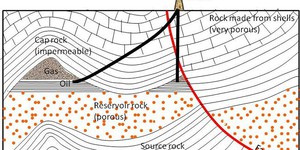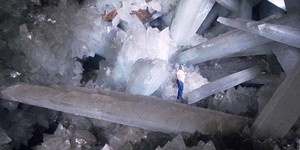Elementary School, Geology Science Projects (20 results)
Geologists study the Earth, trying to understand the forces that gradually shape and change the landscape and ocean floor, as well as forces that make themselves felt more suddenly, like earthquakes and volcanoes. The information geologist discover helps in many ways, from keeping populations safe from disasters like landslides to uncovering important ore deposits like titanium used for surgical equipment.
|
Select a resource
Sort by
|
Often, when we think of something that is solid we think about rocks. But in reality, rocks have tiny holes of air inside them. This is called porosity. In this science project you can find out what it means to be "solid as a rock!"
Read more
Featured
Have you heard that garlic powder is supposed to inhibit the growth of bacteria? Which do you think would make a better disinfectant: a solution of garlic powder or a solution of bleach? This project shows you a straightforward way to compare the effectiveness of different disinfectants (or other antimicrobial agents), by measuring zones of inhibition on a culture plate.
Read more
The Ring of Fire is a region of volcanic and earthquake activity that surrounds the Pacific Ocean. In this project you can explore the connection between plate tectonics and volcanic activity by mapping historical data.
Read more
Everything on our planet is connected together, linked by a giant recycling system called the biogeochemical cycle. It is an amazing process. You can actually investigate how our planet recycles and reuses everything needed to support life by making a small model of the biosphere. What will be important to include in your miniature system so that it can support different types of life?
Read more
Have you ever wondered how fast a seismic wave from an earthquake travels? In this geology science project you can figure this out using historical seismograph data that you can collect from the comfort of your own computer. You will use a web interface to a network of seismometers run by the Northern California Earthquake Data Center, at the University of California, Berkeley. From the seismograms you make, you will be able to measure the time it took for the seismic waves to travel from the…
Read more
Have you ever taken a step onto what appeared to be dry ground, only to find yourself ankle-deep in mud? Yuck! When you walk through damp soil, it can be a very messy experience. How can you tell if soil is wet or dry before you step on it? In this science project, you will investigate whether the color of the soil can help you determine how dry or wet it is.
Read more
Sedimentary rock forms in layers that are deposited one after the other over long periods of time. Oftentimes, sedimentary rock contains fossils and other debris that are deposited within the layers. How do sediments form? How are sediments of different shapes, sizes, and types sorted during the process of sedimentation? Find out in this science fair project!
Read more
Today it is widely accepted that the Earth's crust consists of a series of huge plates that slowly move. The low parts of the plates are beneath the world's oceans, and the high parts of the plates are landmasses. New plate material is generated at deep sea ocean ridges in a process called sea-floor spreading. Material from plates is also recycled at trenches, where dense, oceanic crust dives back (subducts) underneath an adjacent plate towards the upper mantle. Figure 1 shows a map of the…
Read more
You may have heard the expression, "You can't get blood from a stone." But what about oil? Can you get petroleum oil from a stone? In this geology science fair project, you'll find out what kinds of stones make the best storage rocks for oil. You'll see which ones can soak up oil like a sponge, and which ones cannot soak up oil or let it pass through, but can act as a "cap" to contain the oil in secret underground traps. Can a hard rock really act like a soft sponge... maybe SpongeBob…
Read more
What variables contribute to the properties of the soil in an area? Investigate the role of climate, weather, topography, time, parent material, vegetation, and biological and chemical agents on soil formation. How are soils characterized? There are 3 basic particle sizes which create three basic soil types: sand, silt, and clay. Investigate the properties of the three different types of soil by observing grain size, shape, hardness, color, chemical composition, pore space, aeration,…
Read more
Caves have been used for much more than just exploring throughout Earth's history. Caves have been used for shelter, for religious purposes, and for burial sites. They were even used for food storage, before refrigeration, because they are cool and have constant high humidity. But how are caves formed? What causes those fantastic formations in caves? How do cave formations change as you go deeper in the cave? Get ready for an adventure as you visit a local cave and learn more in this science…
Read more
|
Explore Our Science Videos
Build a Gauss Rifle
Obstacle-Avoiding: BlueBot Project #4
Basic Circuits Kit: Conductors and Insulators




